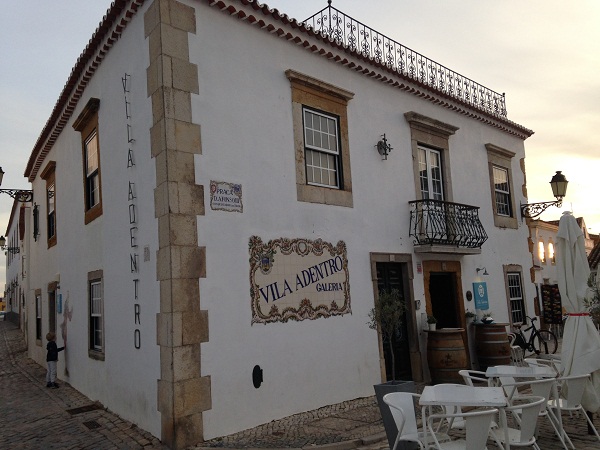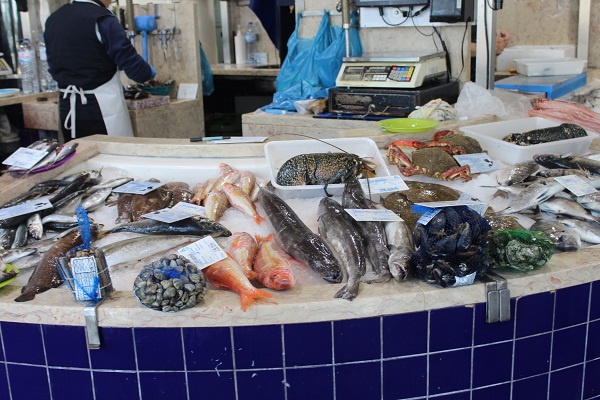In case you haven’t heard, Portugal is the new Iceland. I read that pronouncement in a recent article. Every year there is an “it” destination, last year it was Iceland. Portugal has taken Iceland’s spot for 2017. We had been to Lisbon several years ago when we lived in Europe and really liked it, great food at very reasonable prices, old buildings covered in antique tile, cable cars taking you up and down narrow cobblestone streets, what’s not to like.
Sam and I just returned from a quick three day trip to the Algarve, Portugal’s southern most region. It it best known for its beautiful coastline, beaches, golf courses and fishing villages. Faro is the gateway to the region with cheap and easy transportation via bus and train to the rest of the Algarve.
FARO
As the capital of the Algarve, Faro is a good home base for excursions in the area and is where we stayed during our visit.
Faro Highlights
- Old city -the area dates to Roman times and later spent 500 years under Moorish rule, in Vila Adentro we were given a tour of this 15 century building which is currently a cafe, the well in the floor in the middle of the cafe dates to the 11 century, tile work throughout depicts important Portuguese figures and events
- Spotting stork nests (yes, I became obsessed with it) – be sure to look up when walking around Faro, storks build nests on top of buildings and even street lights, the birds are huge, the nests are huge and truly impressive and you will hopefully catch a glimpse of the birds when they stand up
- Chapel of Bones – located in the beautiful Church of our Lady of Carmel, this chapel was created from the bones of over 1,000 monks whose bodies were dug up in the 19th century to make room in Faro’s overcrowded cemetery, a macabre, but interesting site
- Large food market (Mercado Municipal de Faro) – a modern facility houses vendors selling fruit, veg, baked goods and lots of fresh fish, there’s a great grocery store downstairs and nice cafes
- Faro beach – a beautiful wide beach with lovely sand, easily accessible by bus and it has numerous restaurants where the bus drops you off
- food, food, food – fish and rice dishes in particular are excellent, as well as paella, cataplanas (seafood stew) is the name for a piece of cookware and a type of food cooked in the cookware, if you like marzipan this area is for you! the marzipan takes many shapes including whimsical animals, while in Vila Adentro we were told that the 4 basics of Algarve desserts are oranges, almond, carob and fig, all locally grown of course, you will marvel at windows full of lovely combinations of these ingredients, there are several local beers that are cheap and plentiful including Sagres and Super Bock, but don’t forget about sangria! if you have ever wanted to try sardines, not the kind in cans, this is where you should do it, most sardines in Portugal are consumed fresh and their importance is seen everywhere, from mosaics of sardines in stone and tile work to the famous ceramic sardines of Bordallo Pinheiro
- photographing architecture and street art – many buildings in Portugal are covered with tiles, introduced by the Moors, the method of covering buildings in tile has persisted and is not only decorative but helps keep buildings cool in the summer
- frolicking with peacocks at Alameda Joao de Deus Garden – this lovely park was only a 10 minute walk from our hostel, in addition to a cafe, beautiful landscaping and a playground it had some caged animals as well as wandering peacocks




























TAVIRA
From Faro you can head east or west to many cities and towns in the Algarve. Located just a 30 minute train ride from Faro for the cost of only $10.50 for both Sam and round trip we headed to the lovely town of Tavira located just 18 miles from the Spanish border. We passed salt flats along the way. The area is known for its sea salt which you can buy in many markets. Be sure to check out both sides of this town connected by a lovely bridge but be prepared to enjoy it as a slow pace with only a few touristy shops.
Tavira Highlights
- Roman Bridge – actually a Moorish bridge links both sides of the city across the River Gilao, musicians can be found playing on the bridge and there are many spots to enjoy the views and take photos
- Bishop Square – a lovely square with a park and a statue of a bishop in the center, it is surrounded by restaurants and streets that are fun to wander down, not a lot of hustle and bustle, but a perfect place to sit and enjoy eating some local oranges (that’s what we did!)
- Tavira Castle – This is a ruined castle that has a wonderful garden and great views of the surrounding area and the red tiled roofs of the city.

Ro






LAGOS
On our last full day in the Algarve we headed west on a 1.5 hour train ride to Lagos, passing orange groves and golf courses along the way. Lagos is known for its beaches, rocky coastline and historic center.
Lagos Highlights
- Slave Market Museum (Mercado de Escravos)- the first slave market in Europe was established in Lagos in 1444. It processed people who were transported from Africa and were sold as slaves throughout Europe.
- Lagos historic center – the Slave Market Museum is located in the historic center of Lagos which also offers an opportunity to walk down many old streets full of charm, cafes and a large fresh food market with plenty of local fish for sale.
- Shop for cork products – Portugal produces about half of the world’s commercial cork. It supplies corks bottle stopper for the beverage industry but also manufactures accessories such as purses, bags, shoes, belts and jewelry. There are cork shops all over Portugal, but I saw an abundance of them in Lagos.
- Coastline – Lagos is known for its beaches and rugged coastline of cliffs, grottos and sea caves











One thought on “3 Days on Portugal’s Algarve Coast”